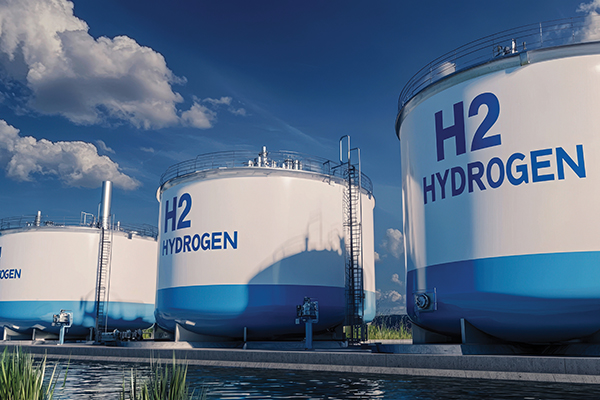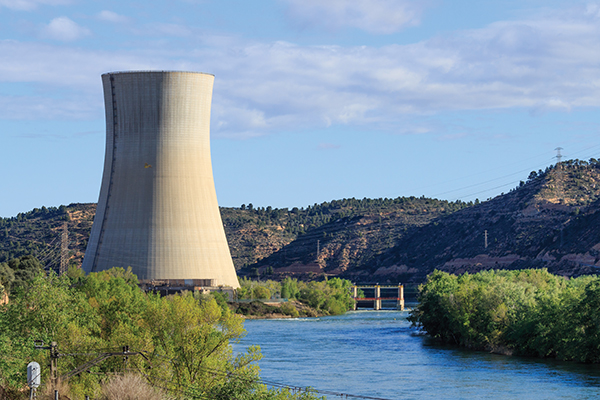
Global energy production and consumption patterns have evolved significantly in recent years, driven by a combination of economic growth, population increases, technological advancements and efforts to transition to cleaner energy sources. Currently, global energy production is still dominated by fossil fuels, which account for approximately 84 percent of the worldís energy supply. The remaining 16 percent is sourced from renewable energy sources (12 percent), nuclear energy (two percent) and hydropower (four percent).
In terms of consumption, global energy demand has continued to rise. The International Energy Agency (IEA) reported that worldwide energy demand grew by 2.5 percent in 2022, with growth largely driven by emerging economies in Asia and Africa, where industrialization and urbanization are boosting energy needs. China, India and the United States remain the world’s largest energy consumers, with China consuming 26 percent of global energy.
Energy Production Breakdown for 2023
Comprising oil (30 percent), coal (26 percent) and natural gas (28 percent), fossil fuels are still the primary energy sources globally. Although the demand for coal has decreased in many parts of the world, especially in Europe, it remains a crucial energy source in countries like China and India. China and India are the two largest consumers of coal globally, accounting for a substantial portion of global coal production and contributing significantly to global carbon emissions.
Coal Consumption by China and India
China: China is the world’s largest consumer and producer of coal. As of 2023, China consumes more than half — 54 percent — of the world’s coal production. This is largely due to its heavy reliance on coal for electricity generation and industrial processes, particularly in steel and cement manufacturing. The country produced around 4.13 billion tons of coal in 2022, with a substantial part being consumed domestically.
India: India is the second-largest coal consumer in the world, using about 11 percent of the world’s coal production. India’s coal consumption is driven by its growing energy needs, especially for electricity generation, which is heavily reliant on coal-fired power plants. India consumed approximately one billion tons of coal in 2022, much of which was domestically mined.
Contribution to Carbon Emissions
China: China’s coal consumption contributes heavily to its carbon emissions. In 2022, China emitted about 12.1 gigatons of CO2, accounting for approximately 31 percent of global carbon emissions. Approximately 60 to 65 percent of these emissions come from coal combustion, primarily in power generation and industry.
India: India, as the second-largest carbon producer among developing nations, emitted approximately 2.8 gigatons of CO2 in 2022, which accounts for seven percent of global carbon emissions. About 70 percent of these emissions are tied to coal consumption, particularly in power generation and heavy industry.
Combined Impact
Together, China and India consume around 65 percent of global coal production, and their coal use is responsible for a significant portion of global carbon emissions. Their reliance on coal has made the two countries pivotal in international climate negotiations, particularly in discussions about transitioning away from fossil fuels.
This level of coal consumption contributes substantially to global carbon emissions, as coal is the most carbon-intensive fossil fuel, releasing approximately 2.2 kg of CO2 per kilogram of coal burned. As such, reducing coal consumption in these two countries is critical to global efforts to mitigate climate change.
Renewable and Nuclear Energy
Wind, solar and biomass energy sources have seen rapid growth in recent years. In 2022, wind and solar energy accounted for 12 percent of global electricity production, driven by the falling costs of solar panels and wind turbines, the availability of government incentives and increased efficiency.
Nuclear power remains a key player in global energy production, though its share has declined from 17 percent in the late 1990s to approximately 10 percent today. Countries such as France, Russia and the U.S. are major producers, while others are shifting away due to safety concerns.
Projected Energy Production
The global energy mix is expected to shift dramatically over the next several decades. According to the IEA, by 2050, renewable energy sources could account for as much as 75 percent of global electricity generation under scenarios aimed at limiting global warming to 1.5°C.
Following are some projections for key energy sources:
Renewables. Wind and solar energy are expected to grow exponentially, with solar energy forecasted to become the largest electricity source by 2040, accounting for over 30 percent of global electricity generation. Investment in grid modernization and energy storage will also be important to supporting this transition, particularly in balancing intermittent renewable supply with demand.
Fossil fuels. Despite efforts to reduce reliance on fossil fuels, they will continue to play a significant role in energy production over the next 20 years. The demand for oil is expected to plateau around 2030 as electric vehicles (EVs) and alternative fuel technologies become more widespread. Natural gas will continue to be essential for electricity generation and industrial use, particularly as a transition fuel.
Nuclear. While there are fewer new nuclear power plants being built compared to renewable energy installations, there is optimism about nuclear technology’s future, especially with developments in small modular reactors (SMRs) and advancements in fusion technology. Nuclear power’s share of the energy mix could rise to meet the growing global demand for carbon-free, stable baseload power.
Production Challenges

There continues to be a number of challenges that need to be overcome in the production of nearly every energy source.
The intermittency of renewables. The variability of solar and wind energy continues to present a significant challenge for power grids that need to maintain a constant supply of electricity. Without adequate storage solutions or grid infrastructure, renewable energy intermittency could lead to inefficiencies and power outages. As renewable energy production grows, nations are increasingly focused on expanding energy storage capabilities, including battery systems, pumped hydroelectric storage and hydrogen-based energy storage.
Energy storage. Energy storage is a key bottleneck in the renewable energy landscape. While lithium-ion batteries have seen massive cost reductions, they still pose challenges in terms of scalability, material availability and long-term energy storage for grid use. Breakthroughs in next-generation battery technologies, such as solid-state batteries or flow batteries, will be essential to overcome these obstacles.
Grid modernization. The traditional electrical grid infrastructure available today is not equipped to handle the integration of large-scale renewable energy, distributed energy generation and two-way electricity flows from prosumers (consumers who produce their own electricity). Upgrading grid systems to be more flexible, resilient and capable of handling fluctuating power supplies continues to be a top priority.
Fossil fuel transition. It will remain a significant challenge to reduce the world’s reliance on fossil fuels. Oil and natural gas industries still provide a high number of jobs and economic activity, making it difficult for many countries to phase these fuels out without political, economic and social consequences. The transition to cleaner energy must be balanced with the need to maintain energy security and economic stability.
Nuclear waste and safety. Despite nuclear energy’s carbon-free advantage, concerns about radioactive waste management, high upfront costs and risks of catastrophic failures (such as Chernobyl or Fukushima) remain a barrier to expansion in some regions.
Energy Consumption Challenges
There are also significant challenges that need to be overcome when it comes to energy consumption.
Rising demand. With the global population expected to reach approximately 10 billion by 2050, energy demand is set to increase by 50 percent in the same timeframe. This poses a significant challenge as nations try to meet growing energy needs while also cutting carbon emissions and transitioning to renewables.
Electrification of transportation. Electric vehicles are expected to make up a significant portion of future transportation energy demand. However, scaling EV infrastructure, such as charging stations, and managing the increased electricity demand on the grid are significant hurdles. Furthermore, the production of EVs still relies heavily on minerals such as lithium and cobalt, which present supply chain challenges as well as environmental concerns.
Energy efficiency. One of the most cost-effective ways to reduce energy demand is through improvements in energy efficiency. This includes everything from more efficient appliances and industrial processes to better building designs and retrofits. Implementing these measures globally, however, especially in developing nations, presents an enormous challenge.
Energy Industry Trends

Today, there are several newer trends shaping energy production.
Decarbonization and net-zero pledges. Many countries and companies worldwide have made net-zero carbon commitments – pledges to be emission-free by a certain date in the future — driving the energy sector toward greener energy production. These commitments are spurring investments in clean technologies, including renewables, energy storage and hydrogen. The United States, European Union and China have announced plans to achieve net-zero emissions by 2050 or earlier.
The hydrogen economy. Hydrogen, particularly green hydrogen produced using renewable energy, is being hailed as a game-changer for sectors in which electrification is difficult, such as heavy industry, aviation and shipping. Several countries, including Japan and South Korea, are leading the drive towards a hydrogen economy, although cost continues to be a significant barrier.
Energy as a Service (EaaS). Energy-as-a-Service is a burgeoning trend that provides customized energy solutions, from energy generation to efficiency improvements, often bundled with advanced analytics and software for better energy management. The EaaS model enables businesses to reduce upfront costs and gain access to clean energy solutions with greater ease.
Carbon capture and storage (CCS). CCS technologies are designed to capture carbon dioxide emissions from industrial activities and fossil fuel power plants and store it underground. While the technology has shown promise in reducing emissions, the high costs and the need for extensive infrastructure development have limited widespread adoption of the technologies.
Distributed energy resources (DERs). The rise of DERs, including rooftop solar panels, home batteries and microgrids, is changing how energy is generated and consumed. Rather than relying solely on centralized power plants, these technologies allow homes, businesses and communities to generate their own electricity, contributing to energy resilience and reduced emissions.
Digitalization and AI in energy management: The use of artificial intelligence (AI) and digital technologies in energy management continues to improve the efficiency of today’s energy systems. AI can be applied to optimize grid operations, predict energy demand and enhance the performance of renewable energy systems. Smart grids, powered by AI and data analytics, are expected to help integrate renewable energy into the grid more efficiently.
Going Forward
The energy sector is at a critical juncture today. Growing global energy demand has never been higher, but it’s accompanied by increased pressure to transition to cleaner energy sources. While renewable energy is making substantial gains, there are significant production and consumption challenges that must be overcome. Industry trends such as decarbonization, hydrogen and advances in energy storage, grid modernization and AI offer promising solutions, but will require sustained investments, innovative policy frameworks and international cooperation to ensure a secure, sustainable and equitable energy future. T&ID
Sources
• International Energy Agency. “World Energy Outlook 2023.”
• U.S. Energy Information Administration. “Annual Energy Outlook 2023.”
• World Bank. “Global Energy Data Statistics.”
• International Renewable Energy Agency. “Renewable Capacity Statistics 2023.”
• Carbon Brief. “Hydrogen: A Future Energy Source?”
• Bloomberg NEF. “2023 Energy Transition Investment Trends.”

